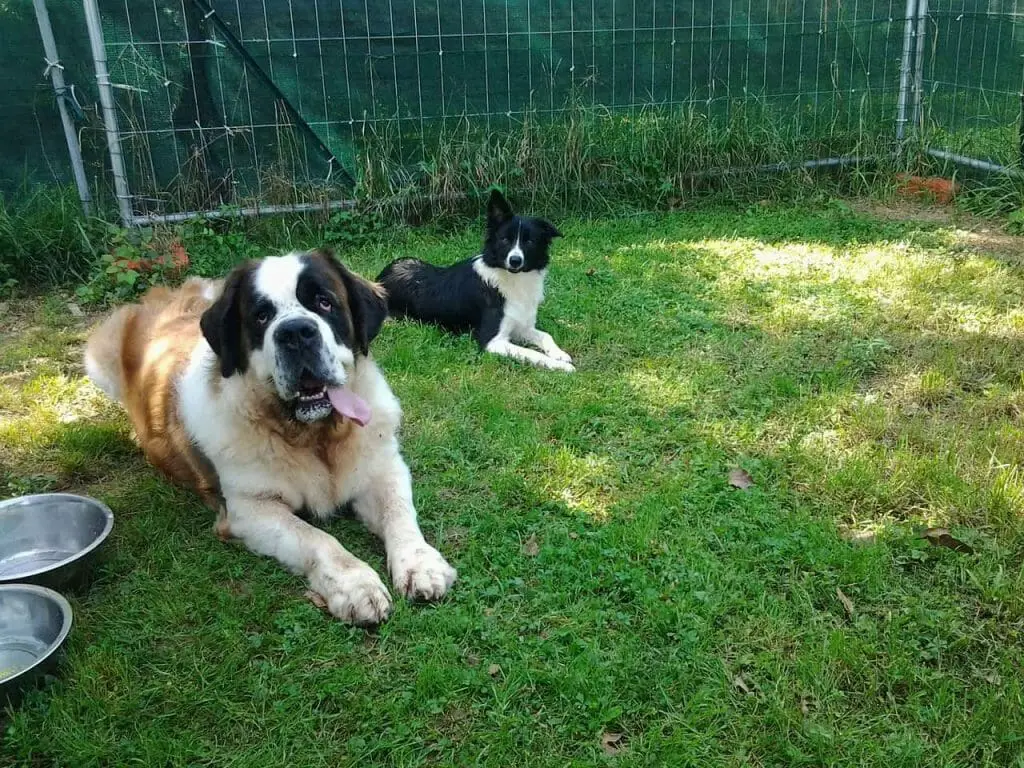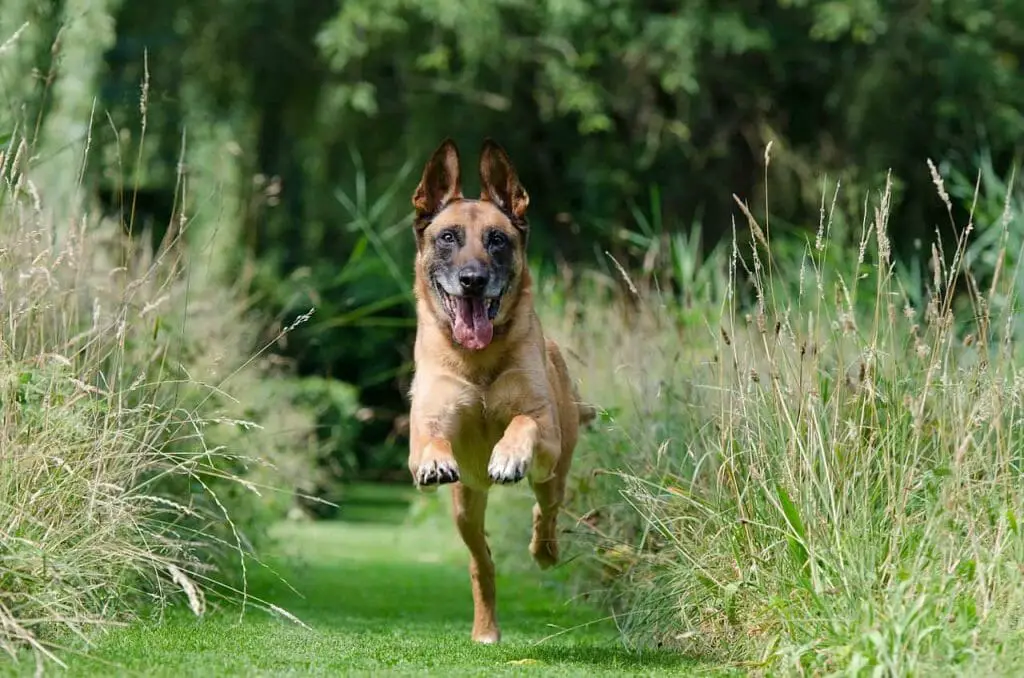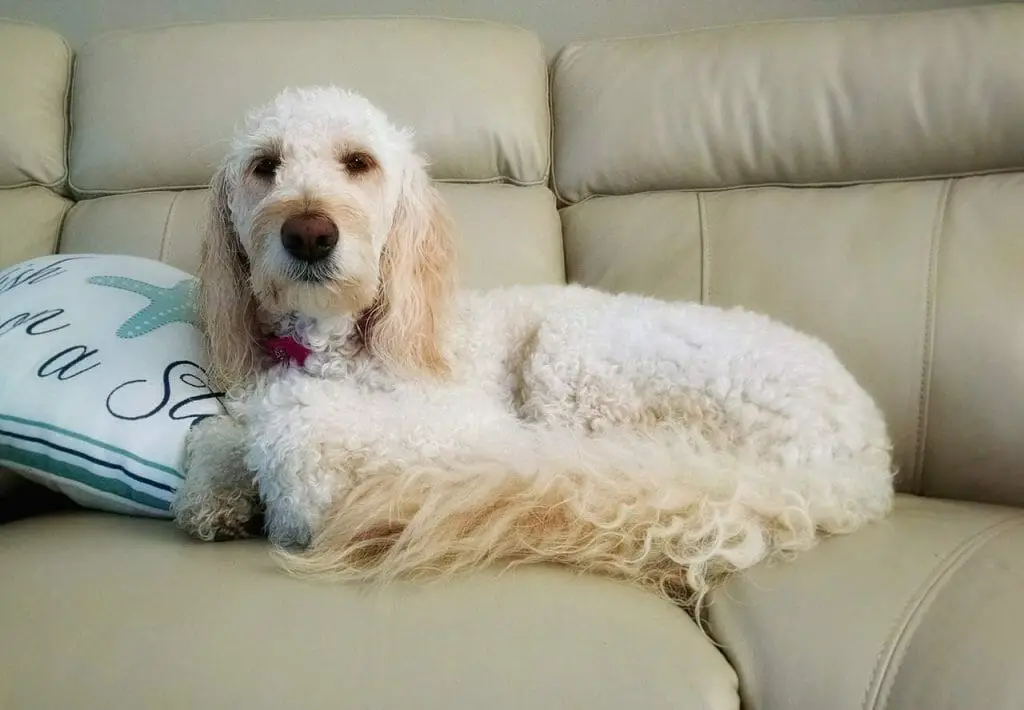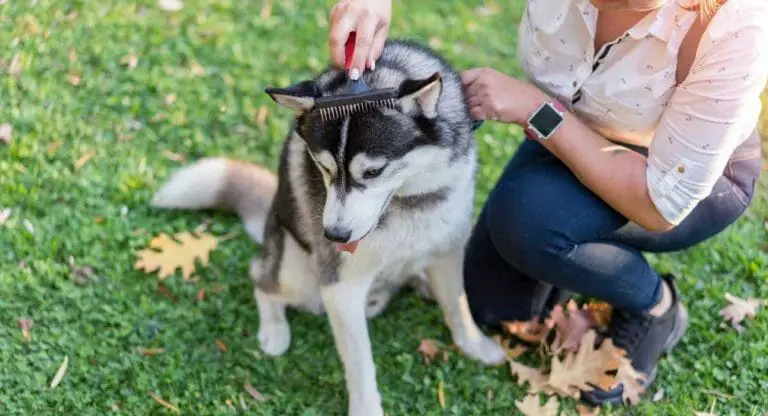Training dogs can be a scary proposition if you don’t know what you are doing. From potty training to trick training, it takes patience, perseverance and knowledge of the canine psyche to teach a dog how to appropriately respond to you and obey your commands.
However, it doesn’t have to be all stress and frustration. By following a few simple techniques, you can easily learn how to train your dog to obey basic commands. Read on to learn the easiest way to train your dog the basics.
How To Train Your Dog: The Basic Commands
Dogs respond best to patient, consistent instruction. Punishment does little besides make the dog afraid of you. Reinforce good behavior and ignore or correct wrong behavior, and your dog will soon learn which result he likes the best. He’ll also learn how to get that good result.
Boundaries Are Necessary
Like children, dogs need boundaries. They must know what is acceptable and what is off-limits. They need to understand what is expected of them. Setting boundaries teaches them to control their natural urge to explore.
There should be areas of your house where they are not allowed to go. Maybe it’s the furniture or the kitchen. Whatever your boundaries are, make sure you are consistent with them. The worst thing you can show your dog is inconsistency.
If he can jump on the couch when he’s clean, he won’t understand why you yell at him for jumping on the couch when he’s dirty. The rules need to stay the same no matter the circumstances. This creates the boundaries for him so that he knows what is ok and what is not allowed.
Dogs don’t know words, but they recognize tones. So, a firm “No” will communicate to him that you are not pleased with his actions. Nothing breaks a dog’s heart like knowing that his owner is displeased with him. He will correct course immediately if he hears in your tone that you are not happy with his choices.
Leadership Is Essential

Since dogs are pack animals by nature, they automatically look to their perceived leader for guidance. When training your dog, you must teach your dog to view you as the pack leader. To effectively learn how to train your dog, you must be the undisputed authority in his life.
Never allow your dog to set his own rules. He must understand that you are fully in charge, and he must follow your lead.
Use your “stern parent” voice when giving commands. If you give commands in a playful tone, your dog won’t take you seriously. The playful tone can be reserved for praise and rewarding good behavior, but commands should be given in a firm tone. Not angry, but firm.
Never give two commands at once because this only confuses the dog. Give one command at a time and immediately reward obedience to each command.
Rewards Are Incentives To Obey
You can teach a dog almost anything if there is something in it for him. Rewards are the fastest and easiest way to train a dog. Dogs don’t really understand good/bad behavior, but they do understand positive/negative results.
When your dog learns that following your commands gets him something he likes or something he wants, he’ll be happy to repeat the behavior as many times as you ask. Similarly, when he finds out that doing his own thing gets him something he doesn’t like, he’ll be more hesitant to ignore you.
For example, if he knows that sitting on command gets him a treat, he’ll sit immediately. If failing to sit means that he misses out on a treat, he’ll learn to rethink his choices.
Games Help Dogs Learn
Learning is more effective when learning is fun. Nobody can learn well when they are bored to tears or put to sleep by mindless repetition of meaningless actions. Playing games with your dog is a great way to help him learn.
It also provides a constructive outlet for all his energy. You can play:
- Tug-o-war
- Fetch
- Hide and seek
- Treasure hunt
These games teach him to follow simple commands, such as the “Come”command, while at the same time engaging his natural curiosity and hunting instincts. They also keep him interested longer so your training sessions can last longer.
Games have the added benefit of wearing your dog out, so he’s ready to lie quietly and relax when playtime is over.
Teach In Various Settings

Your dog may follow your commands perfectly in your backyard, but the true test of his training comes when the level of distraction is increased. For this reason, it is a good idea to train your dog in different settings with different levels of distraction.
While he may be no problem at home, it will be harder for him to listen at the park when there are other dogs to play with. If a cat or squirrel crosses his path, focusing on your commands will require all his effort.
If he succeeds in listening to you in these situations, he is truly trained. If not, perhaps he needs a little more work.
What Are the Seven Basic Dog Commands?
While not all dogs dance on a beach ball, every dog should know some basic commands. This not only makes their behavior more acceptable but also keeps them safe. If your dog knows to recognize and obey these basic commands instantly, it may literally save his life.
Your Dog Needs To Know How to Sit
The command to sit is an important one because few guests like to be greeted with two huge paws to their chest. Dogs are excitable, and sometimes they become a little too enthusiastic in welcoming friends and family to their home.
Teaching them to sit helps them to calm down and greet their favorite people decorously. Your guests will appreciate a dog who sits for a handshake more than a dog who runs circles around them, barking and jumping.
You can teach your dog to sit by pulling upwards on his leash as you give the command. The dog’s rear end goes in the opposite direction from the front end, so as his head comes up, his rear goes down. The moment his bottom touches the ground, reward him with your chosen method.
Teach Your Dog to Stay
The stay command can help to keep your dog from running into traffic or other harmful situations. If your dog knows how to stay, it is easier to keep him safe. Usually, he needs to know the sit command before attempting the stay command.
Ask your dog to sit, then reward him. Then ask him to stay. Don’t make him stay for prolonged periods at first. When he remains seated while you walk away a step or two, reward him. Gradually he will learn to stay while you walk farther and farther away.
Always give him the break signal when the stay period is over. Stay will be one of the most challenging commands for him because he wants to be where you are. Be patient with him and correct him with your voice or a leash pull when he breaks before you have released him.
Dogs are incredibly intelligent and can usually learn very quickly when taught correctly.
The Command To Lie Down Calms Your Dog
This command can help overly excited dogs to control their behavior. Small breeds are commonly extremely high-energy, and they can work themselves into a frenzy about most anything. To help your dog calm down and regain control of his emotions, the lie down command is essential.
This command is also a prerequisite for other commands such as rolling over. Teaching your dog to lie down as a means to master his excitement can allow him to remain in the house even when company comes over. He isn’t jumping all over your guests and frightening small children because he knows how to obey even when he’s feeling excited.
Your Dog Should Know How To Come On Command

The command to come is an important one to teach your dog as quickly as possible. Unless you want to be chasing your pup all over the neighborhood every time he goes out to do his business, he needs to know the come command.
This can also keep him out of dog fights if he knows how to respond instantly to your call. He should know that when he responds to your come call, something good is going to happen. He should associate your command with positive things. This will make him more responsive to you.
Therefore, never call your dog to you for punishment. This will break his trust and make him afraid of you.
Teach Your Dog to Leave It
The leave it command tells your dog he is not allowed to have something. This may prove to be a lifesaver if he comes upon some toxic substance that smells just heavenly, in his opinion. It may also keep him from shredding your favorite pair of slippers.
Ideally, you want to give this command before he takes the object into his mouth. As soon as you notice he is interested, give the leave it command so that he knows it’s a no-no.
Your Dog Should Know How To Drop It
If your dog has already picked up the forbidden object, he needs to know the drop it command. This command teaches him to release whatever he has in his mouth. This command can save you a lot of time wrestling objects away from your dog’s steel grip.
You’re also less likely to accidentally get bit if you teach your dog to drop objects instead of forcing them away from him.
If you like to play fetch with your dog, the game is more enjoyable when he knows to drop the ball at your feet instead of making it into a game of keep-away. The drop it command can also save your shoes from punctures and tears. He will know to put them down instead of making you fight him for it.
Help Your Dog Learn To Wait

The wait command can save you time and frustration trying to corral a wild, overanxious dog. It can also protect him from bounding out into a situation that would hurt him. This command is useful when you take your dog to a park or some such place, and you need to gather a few things before you’re ready to go exploring.
His instinct is to bound out of the car or house as soon as the door opens. The wait command will tell him that he must sit still for a minute before he gets to go for a walk. This gives you time to gather the kids, lock the doors, and attach his leash.
If your dog doesn’t know the command to wait, he may run off and get lost, or he could run out into traffic and get hit.
Make sure that you let your dog know when the waiting time is over. He should not be kept waiting indefinitely.
What Is the First Action To Train A Dog?
The first thing you should teach your dog is that outside is the place to “go.” Even if your dog is older, he may not be housebroken. Potty training, even for dogs, takes time and patience, but if you are consistent, your canine will catch on very soon.
A crate is your best ally in potty training your dog. Dogs usually won’t use the bathroom in their living space. A crate just large enough for your dog to stand or stretch out will encourage him to hold his urges until he goes outside.
Remember never to leave your dog in his crate for extended periods. As soon as you let him out, take him outside to the area where you want him to “go.” If he doesn’t take a hint, put him back in his crate for a little while and try again.
Never crate him as a punishment. Always take him outside as the last thing before bed and the first thing every morning. This will get him into the rhythm of when he should go, and he will learn to associate outside with where he should go.
For best results, do not use puppy pads. This only reinforces the idea that it’s ok to go in the house. There should not be an alternative to going outside.
At the same time, punishing your dog for peeing in the house isn’t a good idea either. Instead of teaching him not to pee in the house, it will only make him afraid to pee in your presence. This can lead to your dog peeing in the house when you’re away and still failing to do his business outside.
The best way to reinforce peeing outside is to lavishly reward him with praise when he does go outside. Dogs will do anything to get your undivided attention, so if peeing outside gets him your praise, he’ll be happy to pee outside.
What Is The Best Way To Train A Dog?

Training dogs is a lot like training kids; yelling does no good at all. If you want your lessons to stick, keeping your voice down is the first step. Yelling simply confuses and frightens your dog. Dogs do not understand our words, but they recognize an angry tone. Since dogs act from instinct instead of reason, your dog will have no idea what he did to make you angry.
This will make it harder for him to understand what you want him to do. You can sabotage your own success by not controlling your temper. Remember, if you want your dog to control himself, model that behavior by controlling yourself.
Positive Reinforcement Makes Training Easier
The best way to train a dog is by positive reinforcement. This means:
- Treats
- Praise
- Belly rubs
- Games
- Walks
Whenever your dog responds appropriately to your commands, show your approval with whatever he likes best. Since he enjoys the results of his hard work, he’ll be more likely to repeat the behavior that earns him those favors.
For breeds that are incredibly food-motivated, just a piece of their regular kibble will be enough of a reward to keep them engaged. Other breeds who show less interest in food may need some other type of positive reinforcement such as affection to keep them motivated.
Dog Training Techniques
Several techniques are used in training dogs. It is up to you to choose which method works best for you and your pup.
Clicker Training Is Quite Effective
Clicker training is done using a handheld device that produces a clicking sound when a button is pressed. As soon as the dog performs the desired action, you press the button and give him a treat. He learns to associate the clicking sound with a treat that was won by his action. Since dogs are usually eager to please, he will repeat the action to keep your approval.
The clicker is used in place of marker words for a couple of reasons. Marker words such as “Yes!” come up often in every conversation not directed at your dog. Hearing these words in many different contexts may make them less meaningful to the dog. But the clicker is a unique sound.
That sound is used at no other time than when training the dog, so it is unmistakably associated with his actions. As well, the sound of the clicker does not indicate a mood. While your voice inflections will affect your dog’s response to you, the clicker does not denote anger or happiness.
It is simply a noncommittal sound that tells the dog a treat is coming. This helps the dog to relax and focus on his actions instead of trying to decide if you are pleased or mad with him. Release from this kind of pressure can only have a positive effect on your dog.
Non-Clicker Training can Work Just As Well
If you choose not to use a clicker for training your pup, there’s no cause for concern. Dogs can learn in different ways. However, you do need to be quick with your approval of his response to your commands.
The most important thing is making sure he learns to associate your approval with his response to your commands. So, when he obeys a command, be instant with a “Yes!” or “Good dog!” and instantly treat him. This teaches him that you approve of his actions.
Be a Little More Patient with Puppies

Puppies may be the hardest to train because they have so much pent-up energy it’s hard for them to focus. For little ones, training sessions should not be longer than fifteen minutes. It is best if you allow them to run off a little of their excess energy before you start trying to train them.
Especially if they have been in their crates all day, they need a few minutes to let off steam before being expected to concentrate on following commands. Let them run and play and just be a dog for five or ten minutes, and then try to rein them in and help them focus on you.
On the other hand, puppies learn faster because they don’t have anything to unlearn. They are like a blank slate that you can fill however you choose. If you can rein in their energy and teach them to focus, you can train them in anything you like.
When Should You Start Training A Puppy?
Ideally, training should start as soon as you bring them home. At seven to eight weeks old, puppies can learn simple things like sit, come, and stay.
As your puppy grows, you can add more advanced lessons suited to his understanding and temperament. By six months old, your puppy should know all the basic commands. He should also be fully housebroken by this age.
Yes, You Can Teach An Old Dog New Tricks
Adult dogs are sometimes easier to train because they have better control of their emotions. Sometimes they have at least a modicum of experience with obeying an owner, which helps them listen better.
Additionally, adult dogs don’t have the wild, pent-up energy that puppies have, so it may be easier for them to focus on you during a training session.
The process for training adult dogs is much the same as training puppies. Positive reinforcement and rewards go a long way towards helping a dog understand what you want him to do.
Adult Dogs May Come With Baggage

However, understand that adult dogs have a lifetime of experiences that impact their behavior. If the previous owner permitted behaviors that you don’t tolerate, the dog will be confused at the change. Be patient. Adult dogs don’t learn as fast as puppies do. It may take longer to get the same result from an adult dog because he may have many things to unlearn.
As well, if he has suffered any abuse or neglect, the trauma of those experiences may serve as a block to his ability to learn. He will not learn well until he learns to trust you. Try to gain his trust and affection before you start to train him.
Once he learns that you will not beat him for failing to understand on the first try, he will work very hard to please you.
Let The Kids Help
Children can use the same techniques we have mentioned to train dogs. If you are pressed for time between work and familial responsibilities, show your children how to positively reinforce and reward your dog. Then let them assist with the training.
It will be a learning experience for both them and the dog. The time together will help them bond while teaching your children the responsibility of owning pets. Your dog will also learn that he is expected to obey no matter who is giving the commands.
Training Dogs Never Ends
Training your pup isn’t over when he has learned to sit, come, and wait. Actually, training him will never end because he will need constant reinforcement of lessons learned, so he doesn’t regress. Whether you choose to teach him advanced commands and tricks or not, you will need to consistently revisit the basics to keep them fresh in his mind.
Much like we forget unused lessons learned in school so long ago, dogs forget lessons they don’t use regularly. To keep him fresh and sharp on everything he has learned, take the time to run through each command once or twice a week.
Try to find new and exciting ways to reinforce old concepts. Daily walks afford a prime opportunity to revisit former lessons. Incorporating it into a natural activity will make it seem less like a lesson and more like a family activity.
Sources:
Dog Training 101: How to Train ANY DOG the Basics – LuvMyChihuahua.com
Dog Training 101: How to Completely Train Your Dog (thesprucepets.com)
How to Train an Older Dog to Do New Tricks (thesprucepets.com)
The First Steps For Training Your Rescue/Rehomed/Adult Dog! – YouTube
DOG TRAINING 101: HOW TO START TRAINING ANY DOG – YouTube
How to Train Your Dog With Positive Reinforcement (thesprucepets.com)
4 Ways to Train an Adult Dog – wikiHow
Basic Puppy Training Timeline: How and When to Start | PetMD
Clicker Training 101: How it Really Works and Why It’s So Popular (rover.com)







